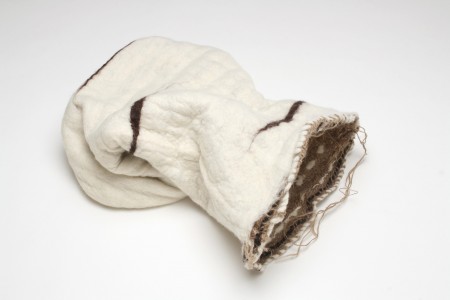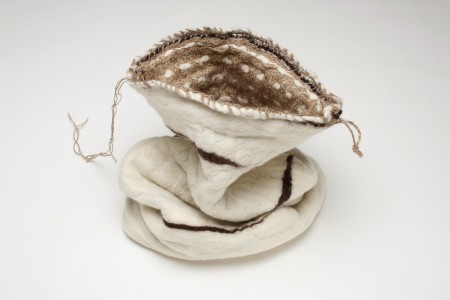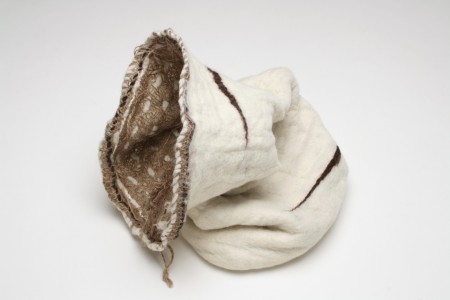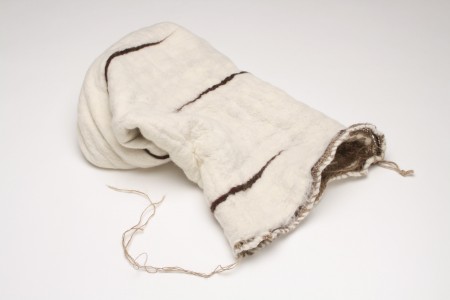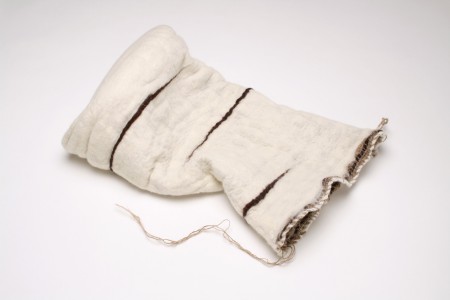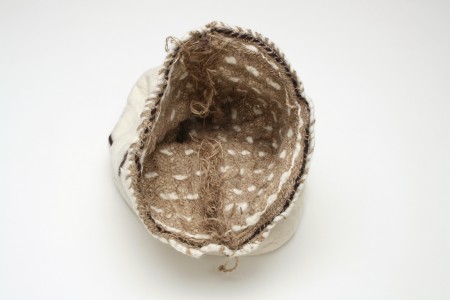Design source
This is another statement piece from the ‘Sense of Felt’ exhibition, tactile, and intended to be thought provoking. I wanted to produce a felt which conveyed the effects of fatigue, caused by neurological disease or damage from injury, to visitors.
Materials
Jute wide weave sack, merino, BFL, Swaledale, Mulberry silk waste and yarn.
Process and Evaluation
Instead of using a jute batt to make a vessel, I selected a loose weave sack to create a textured design on the inside. The design was intended to be a soft structure, with a more solid felt base and a ruche design inside, created by the shrinking of the merino, stitched evenly throughout the piece. Tonal value was added with Shetland yarn and merino wool in dark brown. The outside of the sack was covered with merino, and between the lines the wool was thinner than that over the stitching. This provided a slightly ribbed effect and caused the sack to slump. I originally considered felt roving to add to the outside but felt that a less constructed and simpler piece would link in with the rest of this series.
Using seamless vessel felting technique, whilst at the same time including a seamed sack, creates contradiction, representative of life, particularly for those who have a sensory dysfunction.
On the outside of the base Swaledale wool was added to give the structure strength, as well as inside additional weight. The pattern of a running stitch throughout the piece provided the key, but also added structure and internal ruching. Decoration around the rim in brown Shetland yarn and white merino provided contrasting lines and pulled the design together. On the opening edge, four layers of very fine merino were applied, over this three thin sections of dark brown merino. The original design included BFL, using the same blend as the O-voi-dal pieces, but I substituted this with a dark brown merino. Included, although as an afterthought, is a small amount of Mulberry silk around the opening to provide a contrast between shiny and matt fibres.
The entire work was hand felted to ensure that shrinkage was controlled, and to retain a measure of softness. When handled, the shape could be changed and placed in different positions. The resulting felt has a soft internal ruched pattern because of the pulling of wool fibres against the jute sack. The light shining through the sack highlights the fine strands of jute which have distorted into wavy sensual lines. The thicker strands of jute sack provide a loop that could be used to hang the vessel (I like the slumped effect as well as the ragged thin selvedge running up the inside of the jute seams).
This piece was selected, and exhibited, in The OPEM at The Collection, Lincoln in 2011.
Extracted from 2010 files
